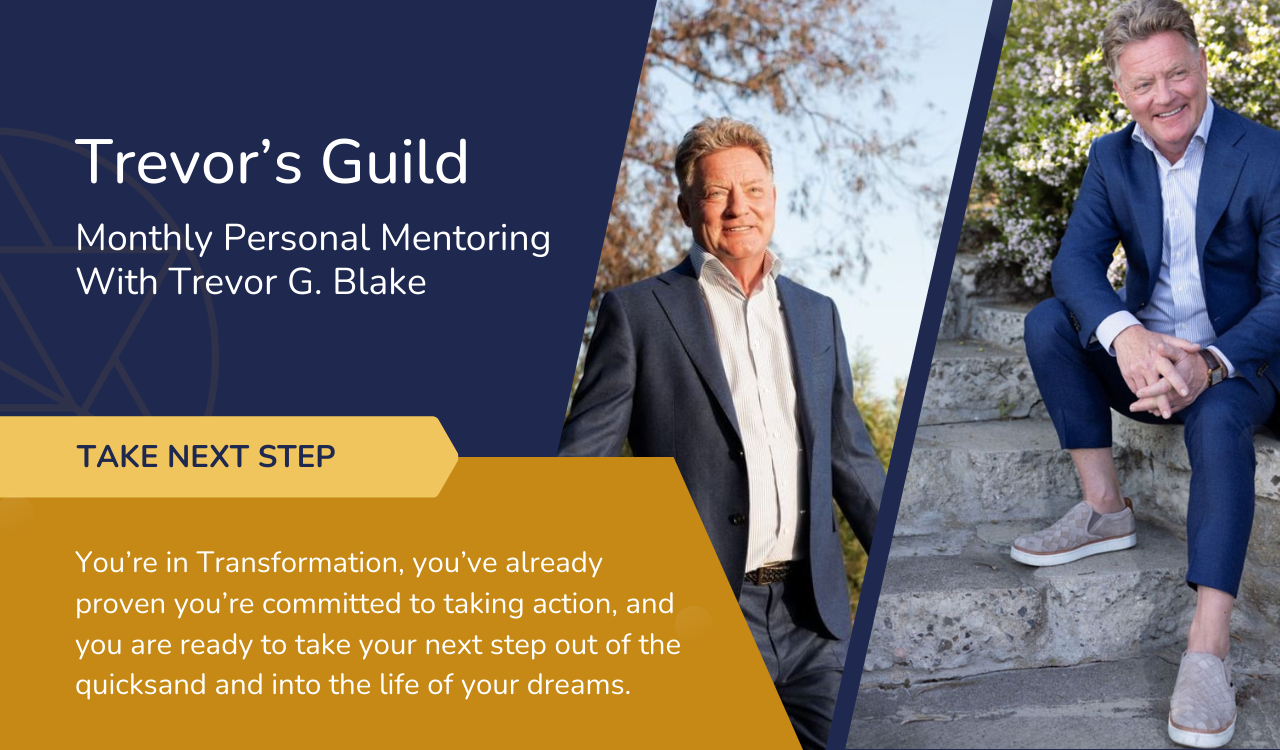Practical Application of the 5-hour workday in Your Life
“To place a man in a multi-stage rocket and project him into the controlling gravitational field of the moon where the passengers can make scientific observations, perhaps land alive, and then return to earth – all that constitutes a wild dream worthy of Jules Verne. I am bold enough to say that such a man-made voyage will never occur regardless of all future advances.” – Lee DeForest
(American radio pioneer and inventor of the vacuum tube, in 1926.)
The 5-hr workday is not something one can suddenly switch to. It is something one builds up over time and by replacing one habit with another, one at a time. In this way we reprogram the RAS to help us find even more efficient ways of achieving the same thing.
Step 1: Eliminate Unnecessary Meetings and make the necessary ones efficient
This is the easiest way to free up time for balance. So many meetings are unnecessary. Those that are deemed necessary are often poorly managed with time wasted on lengthy personnel introductions and a ‘make the agenda up as we go’ attitude.
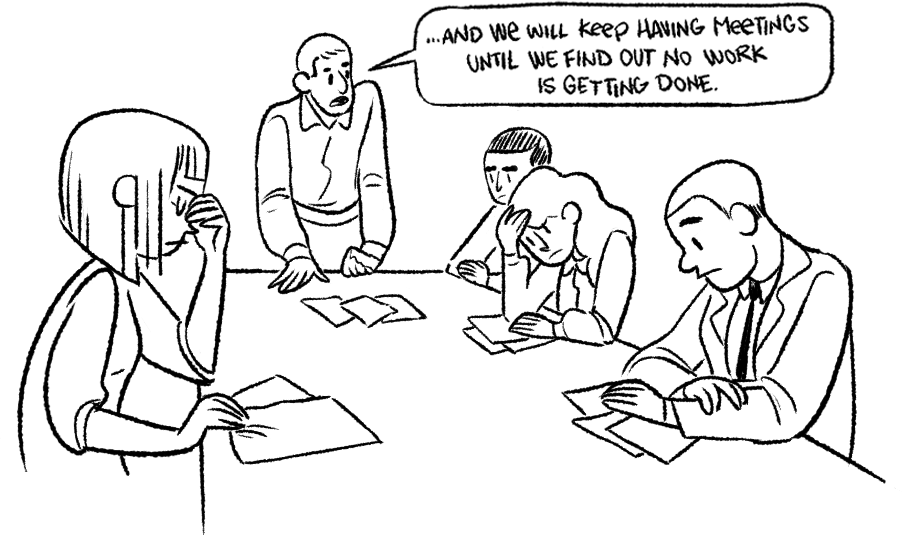
Introducing meeting discipline is essential! There are dozens of books on this subject.
My essentials are:
1. Be absolutely sure the meeting is needed and then question yourself again. Is this for my ego, or because I feel guilty having down time, or because I don’t trust my people to work unsupervised? There is never a need for an update meeting or a ‘how did the week go?’ meeting. They are bullshit pure and simple. Delete them. Meetings are designed for problem solving. They are not to ensure everyone is in consensus.
2. Invite only the people absolutely necessary. No passive bystanders. No supervisors ‘just sitting in the background. Pretend that I am not here.’ If others show up ask them what their contribution will be and then to leave.
3. A tight agenda, posted to attendees at least a day before the meeting. Indicate in the agenda why they are invited and what information they must bring. Showing and explaining the agenda after the meeting starts is a complete waste of time.
4. Limit the greeting phase to no more than five minutes. Don’t go over the agenda as they already have it. Don’t ask for any other business items. Don’t ask people if they have anything they want to add or discuss.
5. Start the meeting on time. No exceptions. If people are late it is their fault.
6. Meetings should never take more than 20 minutes. In 2022 my average online meeting time was 11 minutes.
7. Have an A.I. note-taker (like Fathom or Otter) that posts the minutes and recording automatically when you hit the close button.
Reflecting on my regular career, in traditionally-structured organizations with hierarchies and bloated middle-management layers. I spent 75% of my time in meetings. Sat down. False lighting. Stale air. Monotone presentations. They went on for hours. Most if not all were pointless.
Rarely was the topic of the meeting to do with essential matters such as profitability, cost efficiency, survival, raising funds, or customer satisfaction. Most meetings were about internal matters like employee morale, human resource systems, and company regulations. Innovative ideas got crushed in the so-called democratic process of most-votes-wins. Most votes or consensus does not necessarily mean a solution. Usually it means we all agree with the meeting leader because if we disagree we’ll get a smaller bonus at the end of the year. Avoid the classic ‘everything that can be said has been said, but not everyone has said it yet.’
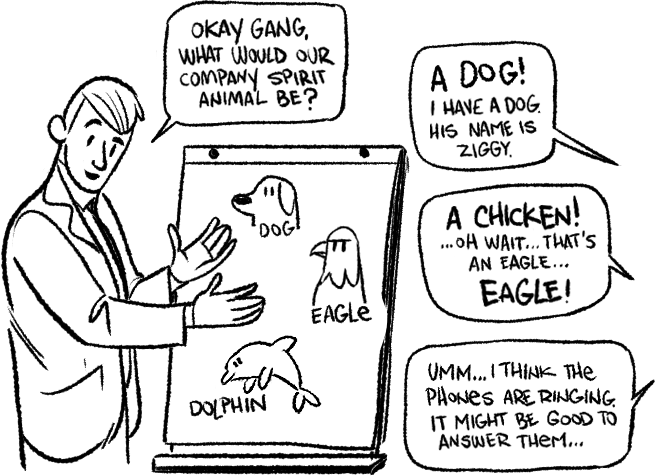
It’s estimated that there are more than eleven million formal business meetings per day in the United States alone, each lasting an average of 3 hours!
Assuming on average that there are 4 participants, which is generously small in my experience, this means 44 million employees are begrudgingly participating in what most consider a waste of time. More than 40 billion meeting hours wasted a year in a country with just 5% of the worlds population.
This doesn’t even take into account the time most employees spend preparing for the meeting or travel time to get to it. In addition, the amount of time people spend in unscheduled ‘drive-by’ meetings in corridors, by the water cooler, coffee pot or in parking lots. When all is included, a typical employee spends over 80 hours a month attending some form of meeting. That’s equivalent to two full weeks of labor per month!
Eliminating all this wasted time, entrepreneurs gain two extra weeks of work or pleasure time a month.
When I started my first company, I found I could achieve two days worth of work, in five hours. If you must have a meeting, follow the rules of productivity. Famed businessman Peter Drucker said, “Meetings are a symptom of bad organization. The fewer meetings, the better.”
I couldn’t agree more! Try your hardest to find a way NOT to call a meeting.
To transform a meeting from “time killer” to “business grower,” it must result in a clearly defined action. If anyone in a meeting leaves without a clear next actionable step, they didn’t need to be there in the first place. They can read the meeting minutes or watch a replay by themselves.
Unfortunately, when many employees become owners they often fall into the same meeting schedule habit. When a startup CEO feels unsure or out of her depth she calls a meeting. When an entrepreneur Holding meetings fuels the ego and feels like progress. When we sit at the head of the table, a meeting makes us feel powerful, as if we are achieving something.
Oftentimes, when things are quiet, as they are in a fully outsourced business model, we feel guilty to have so much free time. So, we call a meeting.
Step 2: Eliminate Burnout
Begin by scheduling at least a single one-hour break into your normal workday. This is to be used for time in nature.
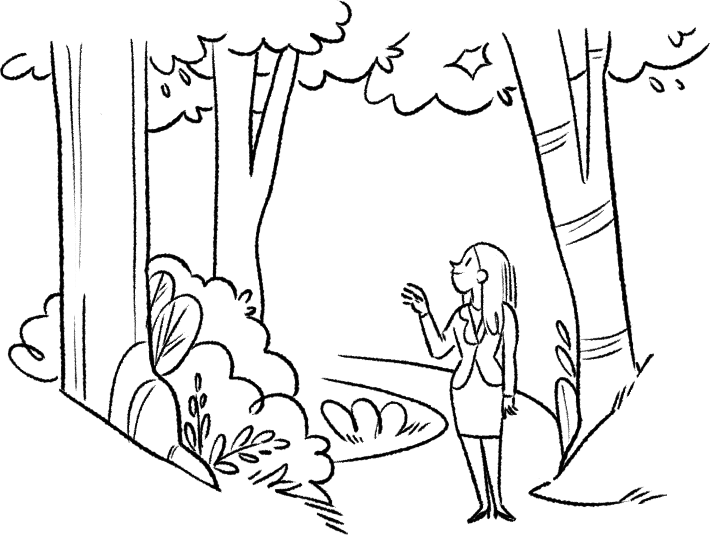
If you can eliminate one meeting a day and replace it with this relaxation time you will always thank yourself. I get so many emails about this. It is the start to getting success with balance
During this time you must leave all connections to work at home… yes switch that phone to airplane mode.
No cheating. Your life and business is at stake.
In 1974 a German-American psychologist, Herbert Freudenberger, first recognized the problem of burnout in New York City. At a clinic for addicts and homeless people, Freudenberger wasn’t thinking of drug users, rather, the clinic’s volunteers. They were really struggling because their work was so intense, many were beginning to feel demotivated and emotionally drained. Though they had once found their jobs rewarding, they became cynical and depressed, not giving their patients the attention they deserved. Freudenberger defined this alarming new condition as a state of exhaustion caused by prolonged overwork – and borrowed the term ‘burnout’ to describe it.
Burnout has three elements: feelings of exhaustion, mental detachment from one’s job and, poorer performance at work.
Sports-people get it. Social media stars get it. Entrepreneurs get it. Freudenberger himself eventually got it. Late last month, the World health Organization announced this ‘trendy problem’ will be recognized in the latest International Classification of Diseases manual. It’s described as a syndrome, ‘resulting from chronic workplace stress that has not been successfully managed.’
‘A lot of the signs and symptoms of pre-burnout would be very similar to depression,’ says Siobhán Murray, a psychotherapist in County Dublin, Ireland. Murray suggests looking out for creeping bad habits such as, increased alcohol consumption and relying on sugar to get you through the day. Also, watch out for feelings of tiredness that won’t go away. ‘So that even if you do sleep well, by 10 in the morning you’re already counting down the hours to bed. Or not having the energy to exercise or go for a walk.’
‘It’s when we’re continually exposed to stress and anxiety, that we’re not letting go, that it starts to turn into burnout. It’s when you’re bringing that big project with you into the next stage of your day, and adding to it continually,’ she says. When we’re continually exposed to stress and anxiety that we’re not letting go of, it starts to turn into burnout.
However, sometimes the work environment is the problem. According to a 2018 Gallup poll of 7,500 US workers, burnout stems from unfair treatment at work. ‘Another issue can be that the values of the company are seriously at odds with the person’s own values, which creates a sense of strain and dissonance, because they’re doing something that they don’t believe in,’ says Walker.
In some cases, her clients can solve the problem by taking up something fulfilling outside of work.
A study of office workers in the UK suggests a three-hour workday might be more sensible, because people can only concentrate for about 20 minutes at a time. One study even found people struggled to stay on task for more than 10 seconds. Recent research supports the shorter worker attention span being caused by gaming and addiction to devices.
It turns out the mantra, “practice makes perfect” is true, but only if people engage in a certain kind of practice known as, “deliberate practice.” Experts don’t spend hours upon hours honing their craft, Ericsson has found. They spend a few hours at a time purposefully trying to improve, then they stop and recuperate.
This is how it is for Secrets to a Successful Startup. We must use focused self-discipline for short periods of time, then have the courage to lock the office door and walk away for a break.
The break is key! I’m not suggesting you switch on the TV for an hour, rather, go for a walk outside in nature, workout, or meditate.
Why not even take a nap? Take your partner for lunch. Play with the dogs. Surprise the kids with a treat. Any such balanced activity switches the way the brain works.

If you’re a morning person, favor those morning hours when you feel fresh to get your most demanding, analytic work done. Use your brain to solve problems, answer questions and make decisions at your peak. For night owls, this is obviously a much later period in the day. I actually work most productively and creatively in the late afternoon. The key is to structure your relaxation times around your peak brain times.
Step 3: Wait until your brain is tired to be creative.
Says Murray, ‘On the other hand, if you’re trying to do creative work, you’ll actually have more luck when you’re more tired and your brain isn’t functioning as efficiently. This sounds crazy, but it actually makes sense when you look at the reasoning behind it. It’s one of the reasons why great ideas often happen when we take a walk or a shower or a nap.
If you’re tired, your brain is not as good at filtering out distractions and focusing on a particular task. It’s also a lot less efficient at remembering connections between ideas or concepts. These are both good things when it comes to creative work, since this kind of work requires us to make new connections, be open to new ideas and think in new ways. So, a tired, fuzzy brain is much more use to us when working on creative projects.’
In 2018, a Scientific American article described how distractions can be good for creative thinking saying, ‘Insight problems involve thinking outside the box. This is where susceptibility to “distraction” can be of benefit. At off-peak times we are less focused, and may consider a broader range of information. This wider scope gives us access to more alternatives and diverse interpretations, thus fostering innovation and insight.’
For me this has always meant, ‘lock the office door and go for a stroll or take a nap.’
Step 4: Start Napping
In one study, participants memorized illustrated cards to test their memory strength. After memorizing a set of cards, they had a 40-minute break wherein one group napped and the other stayed awake. After the break, both groups were tested on their memory of the cards. The group who had napped performed better. Much to the surprise of the researchers, the sleep group performed significantly better, retaining on average 85 percent of the patterns, compared to 60 percent retention for those who stayed awake.
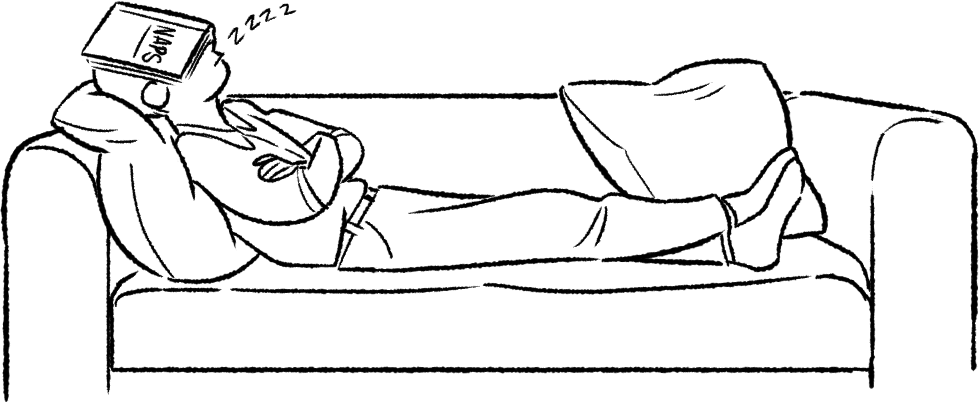
Research indicates that when a memory is first recorded in the brain—in the hippocampus—it’s still “fragile” and easily forgotten, especially if the brain is asked to memorize more things. Napping, it seems, pushes memories to the neocortex, the brain’s “permanent storage,” preventing them from being overwritten.
A study from the University of California asked participants to complete a challenging task around midday, which required them to take in a lot of new information. At around 2 pm, half the volunteers took a nap while the rest stayed awake. Not only did the group who napped perform better than those who didn’t. The napping group’s performance increased.
Recent research found that the right side of the brain is far more active during a nap than the left, which stays fairly quiet while we’re asleep. Despite the fact that 95% of the population is right-handed, making the left side of their brains the most dominant, the right side is consistently more active during sleep. This study’s author, Andrei Medvedev, speculated that the right side of the brain handles ‘housekeeping duties’ while we are asleep. While the left side of your brain takes some time off to relax, the right side is clearing out your temporary storage, pushing information into long-term storage and solidifying memories from the day.
So, although it might be counter intuitive at first, schedule in a twenty-minute nap immediately after lunch. Again, you will always thank yourself for this gift. If you can’t afford twenty minutes in your day to do this, something is not right with your management style.
Step 5: Restructure your home-workspace
For about 300 years humans have been mentally conditioned to think of work as, ‘what you do from 9 to 5 for 5 or 6 days of the week.’ What would have been considered inhumane 400 years ago is now accepted as normal.
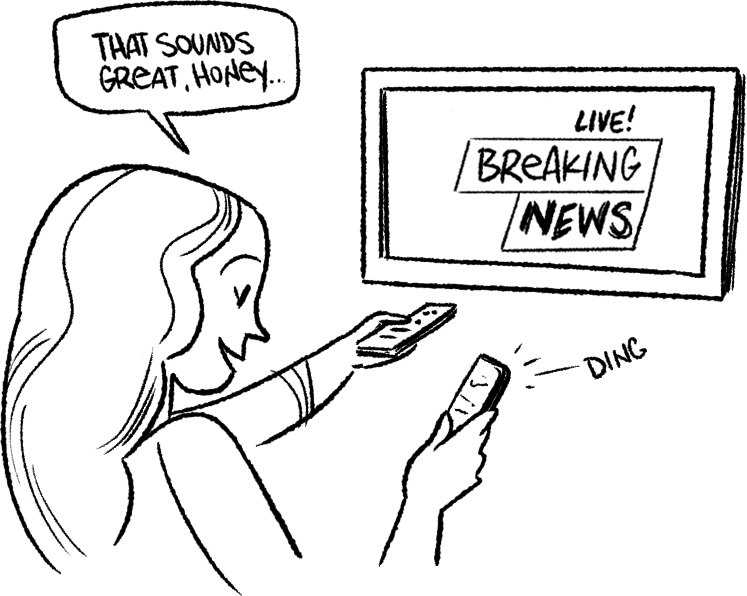
Today, even when relaxing in front of the TV, most people are bombarded with news and shows which reinforce this unnecessary work ethic.
In addition, they are texting, emailing, or taking calls at the same time.
A) Separate, lockable office space in the home.
Without a doubt, the most important ‘must-have’ is a separate office space at home. Don’t just setting up your laptop at the kitchen countertop. There are too many distractions and the temptation to grab something from the fridge is all too real. It’s imperative to separate work-time from the home-time, that means using a spare bedroom or cordoning off a space in a lounge.
You need to create the mental triggers of work and downtime which is only effective when you can enter and leave the workspace. That means, the workspace must also have a door and preferably one that can be locked.
B) Separate phone and devices for business and home-life.
Most people think it an unnecessary expense to have separate devices for the separate parts of their life. I can tell you this is one of the best things I ever learned to do. When your phone shares business and life contacts it is almost impossible to leave it behind during the downtimes. It’s also just as hard to ignore the life calls during business hours. What you end up being is inefficient.
I am not talking about a separate line on the same phone system. I mean separate phones, separate tablets and, separate computers. Only that way can you successfully leave the work phone in the office, lock the door and, walk away.
C) The third imperative is a wee bit old fashioned. Although, sometimes I feel the more things change, the more they stay the same.

Get into the habit of leaving the phone behind so you won’t just be able to add notes electronically. Besides, writing is also shown scientifically to be better for memory retention than typing.
D) introduce artificial intelligence technology for all the mundane tasks such as writing standard operating procedures, business proposals, invoices etc. Much of the paperwork labor can be replaced by A.I. and it alone can save you hours of desk time.
Step 6: Develop Self-Discipline
There are two types of discipline.
1. Schedule Discipline:
Working out of a home office can be a challenge to keep to a regular schedule. There are so many tempting distractions around, family and friends love to pop in for a chat. There is the temptation to catch the last innings of an afternoon baseball game, check the stock market, play a video game, or read headlines. You can do that after you sell your company for $100 million, not when it is a start-up.
The secret to staying disciplined is to schedule absolutely everything. Not just the work tasks but the home-life tasks as well. Both are equally important and deserve the same sophisticated approach. Schedule your day to include both, your meditation time, your start time, your stop time, your break time, lunch with your partner, and so on.
Never deviate from your schedule. There are plenty of online scheduling and calendar tools that allow you to block out regular home life times and share available work times with clients and vendors. This way they can schedule teleconferences without it ever encroaching on your downtime. All they see is, ‘available to meet’ times.
The most productive parts of these schedules are down-times. These are the periods when distractions allow us to go into a sort of mental diffusive mode. It’s in that state when all kinds of solutions to all the problems pop into our heads and why it’s so important to take breaks. Sometimes, when I get a great idea while walking the dogs in the afternoon, I’m eager to get back to the office and start working on it. I have to be very self-disciplined not to fall into that trap. So, I’ll make a note on that handy note pad.
For most people this workday structure is a tougher task than it should be, especially when it comes to switching off the electronic devices. The Center for Neural Decision Making at Temple University performed studies, reported in the Denver Post in 2011, about how the brain processes information. Their research found that as the flow of information increases, activity increases in the region of the brain responsible for decisions, solutions and control of emotions, but – only up to a point. When the brain is flooded with too much information, activity in the same region suddenly drops off. The center for smart thinking shuts down at a time when you probably need it the most.
This has implications for the way we live our lives today. People admit to an almost compulsive need to answer emails, texts, social media, and voice messages. They get nervous when their own do not receive immediate responses. The study showed that people found it impossible to take time off anymore without being anxious the whole time.
They concluded that, “only when people take the time to quiet down the left brain, forget about to-do-lists and unplug from all input, solutions often percolate up from the subconscious. History is filled with stories like this. A period of not thinking about the problem, then the answer simply appears.”
That is why I recommend structuring the workday with total discipline.
2. Task discipline:
When you think of something that needs doing and your immediate reaction is to write it on a list, you have task-discipline. If your immediate reaction is to tell yourself, ‘I’ll remember it later,’ you do not have task-discipline. Your business success will suffer.
At the end of every day, write out a to-do list for the next day and set it to priorities. This will do two things. Firstly, it helps take the stress away and the fear of forgetting something, you’ll be more relaxed in the evening. Your family will stop complaining about you being distracted all the time. Secondly, by writing the list you make a subtle commitment to perform the tasks. It’s your disciplined commitment to ensure a productive day tomorrow.
When you enter your workspace the next day, review the list and start the first task immediately.
This is an essential discipline.
Do not be tempted to check emails, voicemail, or texts first. They will scatter your focus in a hundred different directions. Get that first task done before you give in to the temptation to do anything else. This is particularly important when we consider the impact of time zones. Many feel they start their day having to catch up with other zones, where the day has already begun. When they enter the office they can have half a day’s communications to respond to. Avoid the temptation to be distracted by that. Get task-one done first. You will find this advice in many biographies and self-help books.
It’s good advice and it works.
Depending on your type of business, keep a list of customer or client follow-up tasks. We all have the habit of trying to remember promises we made. Customer satisfaction is your top priority! Whenever you create a need for follow-through, write it on a list and in detail, then schedule it on a calendar. Every day you should review this “follow-through” list and start checking off the tasks.
Finish What You Start. We have all experienced checking into a hotel or airport when the person supposedly helping us takes a phone call in the middle of the process. It’s as if a wall appears between us, we have suddenly become invisible to them. The impact is very negative. When something different calls our attention, we usually stop what we were doing and move our attention to the intrusion. The habit is exacerbated when we work from home because we can find the isolation or loneliness difficult to deal with. If the phone rings or your email alert interrupts while you’re working on your project, avoid the temptation to drop what you are doing in order to answer. The mind says it is just a quick distraction, but if you respond, you can very quickly lose focus on the task you started. When you pick an important task from your “to-do” list, start it and finish it. Don’t allow any interruptions or distractions, no matter how lonely you may feel at that time.
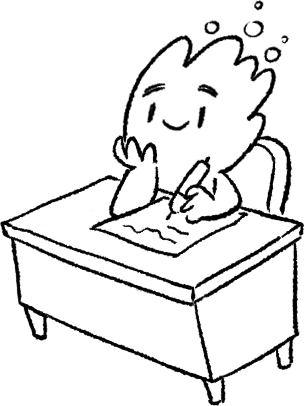
Homework time:
If you currently work in a regular office environment think about how you can start to change your routine. Instead of rushing lunch in a boring cafe or canteen why not go for a leisurely walk. Find a park bench and take a 20 minute nap (set your phone timer). You will be amazed at how beneficial that is.
If you are already an entrepreneur but working too many hours, choose a planned meeting that you know in your intuition is a waste of your time. Cancel it and do the same. Take a walk. Take a nap.
When you discover the benefit you’ll be recommending it to your staff too.
The thing about these simple homework assignments is that they have to be undertaken. That is the only way one can get to the feeling of a new habit. We are feeling creatures who think, not thinking creatures who feel. It is feelings that trigger thoughts and thoughts take 500 milliseconds to form as a response to the feeling. So, we can’t think a new habit into being, we can only feel it into existence.
Resources
The 4 hour work week.
Getting it virtually right – A word about working from home.

